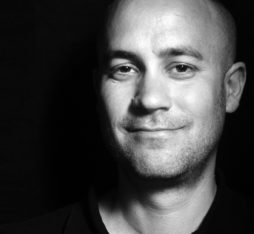Design and the social and human sciences are more essential than ever in projects that address the issue of progress underpinning innovation at Orange.
In what way does design serve people?
In practical terms, in a project, design addresses issues related to meaning, utility, usability, and aesthetics. What are the lives of the people to whom we want to address this service really about? How will this service facilitate their everyday lives? How will they change their practices and what will the progress be? Will it be easy to use? Is it intuitive? Does it reduce stress? Quite simply will people like the product? All very human questions.
At Orange, design is about making services which actually rely on a lot of technical and structural complexity both simple and intuitive. And today more than ever, this complexity is added to by the incredible speed of evolution – disconcerting for all of us. Practices change with new technologies and come in multiple forms. In this context, there is no absolute truth. Design, both as an approach and a skill, drives another way of working: a loop of repetitions between the idea, the prototype and interaction with the users.
This loop has to operate in a multidisciplinary way including the technical aspects, the business and support from the human and social sciences – so that the developed solutions serve people. Within the multidisciplinary approach, design provides valuable assistance because, as it uses very visual tools and engages the emotions, it makes it possible to share a common language within the project team.
But taking people into account in designing products and services is nothing new…
That’s true. At Orange in particular, ergonomics and the human and social sciences have long been present, particularly in research. Today, all the areas of expertise (technical, marketing and design) have to move forward together, from the idea to finally selling the product, and proceed by repeated loops between the customer and us. This is the whole purpose of “Test & Learn”. Human and social sciences must be even more present in this process in order to shed light on the disruptive social changes underway and help us to question the meaning and identify the opportunities. When design devises a service, it must consider the technological constraints and opportunities, the challenge of sustainable development, accessibility, the relevance of the content, new modes of interaction, economic models, and security issues. The result of this journey is to give as many people as possible a special experience with Orange. Whether in their living spaces (home, car, work), when they need assistance, or when we offer them our latest services.
Special, meaning multisensory?
Yes exactly. Technology means we can integrate new ways of interacting with devices into the services and engage all our senses. This will change many of our practices. And the possibilities here are immense. Nowadays, touch has become a natural way of appropriating digital interfaces. But tomorrow, how will we integrate the explosion of connected objects, the use of conversational agents, artificial intelligence, and what will the progress be… How do we anchor all these innovations in our daily lives? What services will we create? Because it embraces the material, cognitive and emotional components of the experience, design makes it possible to put the “humanness into technology” and address all the points of contact with the brand.
This approach requires both an excellent and plural understanding of human behavior…
To be able to address every dimension of usage, technology, however sophisticated, is not enough. The contribution of the human sciences is indispensable. Within the Innovation, Marketing and Technology division of Orange, we work with sociologists, ethnologists, psychologists, we cross-reference views, develop the links between design and human and social sciences in order to bring a point of view to innovation projects. It gradually builds an idea of progress that Orange can choose to deliver. Design must free people from technological complexity. It must allow customers to choose the experience that suits them and therefore understand it, and actively engage with digital technology.




